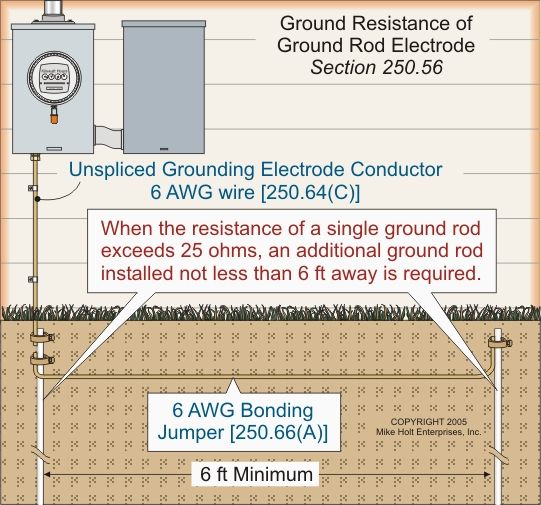Fmkehoe
Senior Member
- Location
- Cornwall ny USA
- Occupation
- Inspector
Why can 2 copper grounding wires not go on the same clamp on a grounding rod?
why 2 separate clamps?
why 2 separate clamps?
Testing and listing conditions.Why can 2 copper grounding wires not go on the same clamp on a grounding rod?
why 2 separate clamps?
That’s what the inspector said. One continuous wire from one rod to another rod, 6’+ away and then to panel.... ok. But if it is two separate wires that it Hass to be on two separate clamps.I usually run one conductor unbroken to two rods, eliminating a third clamp.
That’s what the inspector said. One continuous wire from one rod to another rod, 6’+ away and then to panel.... ok. But if it is two separate wires that it Hass to be on two separate clamps.

I usually run one conductor unbroken to two rods, eliminating a third clamp.
I have always run it that way, because I was taught that was code.:ashamed1:
I disagree with the Mike Holt graphic on 250.64 C... One does not have a valid electrode under the code with one rod that is untested. I do not see how a jumper can be run from one electrode to another under that section.
I am pretty sure I am wrong and the graphic is right, not sure where to look that allows what I suppose is considered as a bonding jumper between the rods to be used in place of a continuous or irreversibly spliced GEC.
Edited to add... Does the ground rod clamp count as the irreversible splice?

